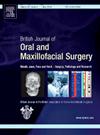Do the existing quality-of-life tools appropriately measure oral health-related quality of life in head and neck cancer? A scoping review
IF 1.9
4区 医学
Q3 DENTISTRY, ORAL SURGERY & MEDICINE
British Journal of Oral & Maxillofacial Surgery
Pub Date : 2025-07-01
DOI:10.1016/j.bjoms.2025.05.004
引用次数: 0
Abstract
Head and neck cancers and their respective treatments have a profound impact on quality of life. Many oropharyngeal and oral cancers are likely to have implications for oral health-related quality of life (OHRQoL), but research investigating tools to measure this are lacking. We conducted a scoping review to ascertain the available tools for measuring OHRQoL in head and neck cancer patients. The primary objective was to compile a summary of the existing tools and determine their completeness, validity, and reliability. The literature search yielded 1239 articles. Thirty-one studies were included in the review and multiple tools were identified. None of the tools assessed all potential OHRQoL impacts, and none had undergone comprehensive testing using a range of assessments. Most of the tools did not adhere to published guidance, with only the European Organisation for Research and Treatment of Cancer (EORTC) citing methodological guidance in their survey tool development protocols. All tools achieved recommended readability scores in English. Due to methodological flaws in the evidence base, it was not possible to definitively establish the completeness of any available tool. There was discordance between tools regarding the relevant OHRQoL impacts. Several tools failed to assess accepted domains of OHRQoL, calling into question their concordance with the construct of OHRQoL. In addition, there was a lack of adherence to published standards regarding both the construction and testing methods for quality-of-life instruments. Studies reporting on OHRQoL in head and neck cancer may, therefore, not comprehensively assess the actual impacts of the disease and its treatment.
现有的生活质量工具是否能适当地衡量头颈癌患者口腔健康相关的生活质量?范围审查。
头颈癌及其相应的治疗对生活质量有着深远的影响。许多口咽癌和口腔癌可能对口腔健康相关生活质量(OHRQoL)有影响,但缺乏研究调查工具来衡量这一点。我们进行了一项范围综述,以确定测量头颈癌患者OHRQoL的可用工具。主要目标是编译现有工具的摘要,并确定它们的完整性、有效性和可靠性。文献检索产生了1239篇文章。本综述纳入了31项研究,并确定了多种工具。没有一种工具评估了所有潜在的OHRQoL影响,也没有一种工具经过了使用一系列评估的全面测试。大多数工具没有遵循已发表的指南,只有欧洲癌症研究和治疗组织(EORTC)在其调查工具开发协议中引用了方法学指南。所有工具都达到了推荐的英语可读性分数。由于证据基础的方法学缺陷,不可能确定确定任何可用工具的完整性。关于相关OHRQoL影响的工具之间存在不一致。一些工具未能评估OHRQoL的可接受域,这使得它们与OHRQoL结构的一致性受到质疑。此外,在生活质量仪器的构造和测试方法方面,没有遵守已公布的标准。因此,报告头颈癌OHRQoL的研究可能没有全面评估该疾病及其治疗的实际影响。
本文章由计算机程序翻译,如有差异,请以英文原文为准。
求助全文
约1分钟内获得全文
求助全文
来源期刊
CiteScore
3.60
自引率
16.70%
发文量
256
审稿时长
6 months
期刊介绍:
Journal of the British Association of Oral and Maxillofacial Surgeons:
• Leading articles on all aspects of surgery in the oro-facial and head and neck region
• One of the largest circulations of any international journal in this field
• Dedicated to enhancing surgical expertise.

 求助内容:
求助内容: 应助结果提醒方式:
应助结果提醒方式:


